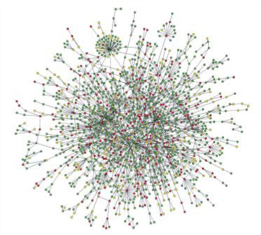Team:ETH Zurich/Project/Motivation
From 2008.igem.org
(→Engineering chasis) |
(→Why in this case simpler is better ...) |
||
| Line 15: | Line 15: | ||
Building new functions into cells is the goal of synthetic biology. To achieve this, circuits encoding for the desired behavior have to be inserted into an existing network of allready considerable complexity, where many of the interactions are not completely understood. By reducing the complexity of the target organism, this interdependencies can be reduced and more predictable results can be obtained. | Building new functions into cells is the goal of synthetic biology. To achieve this, circuits encoding for the desired behavior have to be inserted into an existing network of allready considerable complexity, where many of the interactions are not completely understood. By reducing the complexity of the target organism, this interdependencies can be reduced and more predictable results can be obtained. | ||
| - | One of the main engineering goals in this field is to make the design of new circuits more deterministic, allowing for | + | One of the main engineering goals in this field is to make the design of new circuits more deterministic, allowing for predictive mathematical models and simulation of new functions before these are implemented in vivo. Cross-talk between the different pathways in the organism and the additionally implemented circuits can lead to interferences, making the behavior non-deterministic. In such cases "debugging" of the inserted circuit can be extremely hard. A minimal cell would provide a more predictable chassis when used as an engineering fundament. |
| - | + | ||
== Engineering chasis == | == Engineering chasis == | ||
Revision as of 18:32, 25 October 2008
|
Why in this case simpler is better ...Building new functions into cells is the goal of synthetic biology. To achieve this, circuits encoding for the desired behavior have to be inserted into an existing network of allready considerable complexity, where many of the interactions are not completely understood. By reducing the complexity of the target organism, this interdependencies can be reduced and more predictable results can be obtained. One of the main engineering goals in this field is to make the design of new circuits more deterministic, allowing for predictive mathematical models and simulation of new functions before these are implemented in vivo. Cross-talk between the different pathways in the organism and the additionally implemented circuits can lead to interferences, making the behavior non-deterministic. In such cases "debugging" of the inserted circuit can be extremely hard. A minimal cell would provide a more predictable chassis when used as an engineering fundament. Engineering chasisOur main motivation is to develop a method to reduce the complexity of the target organism dramatically. This will allow to characterize the biochemical reactions that are necessary to sustain life, eliminating all the "balast" that may interfere with the inserted functions. We are trying to move from a network with unknown interactions like this: to something more in line with this:
|
 "
"
